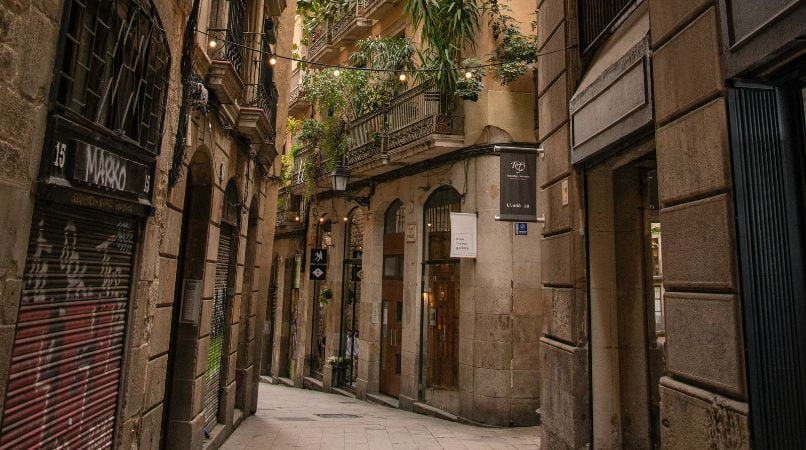
Si estás a punto de empezar unas prácticas de 3 a 6 meses o incluso un máster en Barcelona, uno de los pasos más importantes es encontrar alojamiento. Además de encontrar uno, debe ser adecuado a tus deseos y medios. Barcelona es uno de los destinos más populares en Europa para los estudiantes.
Por lo tanto, encontrar piso puede ser un proceso complicado y estresante para cualquier estudiante que desee trasladarse allí por poco tiempo. Por eso vamos a darte 10 consejos para optimizar tu búsqueda y ayudarte a encontrar piso en Barcelona adaptándonos a tus necesidades.
1. Empieza tu búsqueda lo antes posible
Una vez que tengas claras las fechas en las que realizarás tus prácticas o comenzarás tu máster, es importante que empieces a buscar tu piso. Lo ideal es empezar 2 o 3 meses antes de llegar a Barcelona. Así será más fácil encontrar un alojamiento que se ajuste a tus necesidades y a tu presupuesto. Si empiezas demasiado tarde, corres el riesgo de no encontrar pisos disponibles o que no se ajusten a tus requisitos.
2. Utiliza sitios web especializados en la búsqueda de inmuebles
Dado que Barcelona es una ciudad muy popular entre los estudiantes, en los últimos años han surgido muchos sitios web dedicados a la búsqueda de alojamiento. Utilizar estos sitios puede ahorrarte tiempo y dinero. En la web Loca Barcelona, pued es filtrar los resultados por precio, barrio o tamaño del piso para encontrar las ofertas que más te convengan.
3. Fija un presupuesto
Los precios de las viviendas en Barcelona pueden ser bastante elevados, por lo que es importante fijar un presupuesto claro al principio de la búsqueda. Esto te permitirá hacer un filtro inicial de propiedades, y no perderás tiempo visitando pisos que no puedes permitirte. Si estableces un presupuesto claro, podrás prever los gastos adicionales que se añadirán al alquiler, como agua, electricidad, gas o wifi.
4. Evalúa tus necesidades
Antes de iniciar la búsqueda, es importante determinar los distintos criterios en función de los cuales elegirá su futuro piso. Puede ser interesante saber cuántas habitaciones quieres, cómo está equipada la cocina o si quieres que el piso esté cerca del transporte público.
Así podrás orientar mejor tu búsqueda. Hablar de esto con tus futuros compañeros de piso o propietarios también puede ser una buena forma de definir tus necesidades y obtener consejos o recomendaciones.
5. Busca por barrio
Vivir cerca de tu lugar de trabajo puede ser una buena idea si quieres ahorrar tiempo de desplazamiento o incluso dinero al ahorrarte el billete de metro. Además, los barrios cercanos a los centros de negocios suelen estar bien comunicados por transporte público. No obstante, también puedes elegir tu barrio en función de tus preferencias:
- Barceloneta por la playa.
- Barrio Gótico por sus edificios antiguos.
- El Eixample por sus plazas grandes y concurridas.
6. Saber negociar
No es improbable que tengas que negociar al redactar el contrato de alquiler. No dudes en negociar un precio inferior al ofertado y a las condiciones del contrato. Si encuentras un piso que se adapta perfectamente a tus necesidades, pero el presupuesto es un poco elevado, negociar con el propietario o el agente inmobiliario será una buena forma de intentar comprarlo. Puede que estén dispuestos a hacer concesiones si tienes un perfil serio y fiable.
7. Cuidado con las estafas
El mercado inmobiliario de Barcelona no es una excepción, y las estafas también están presentes. Extrema las precauciones cuando busques tu piso. Nunca pagues por adelantado si no has visitado el inmueble o no has tenido contacto real con el propietario y firmado un contrato oficial de alquiler. Cuidado también con las ofertas que parecen demasiado buenas para ser ciertas, como pisos en zonas muy caras con alquileres muy bajos.
8. Pedir ayuda a un agente inmobiliario
Pedir ayuda a un agente puede ser útil si no sabes cómo hacerlo o si quieres ahorrar tiempo y energía. Un agente puede ayudarte a encontrar pisos que aún no están disponibles en las webs de búsqueda de vivienda y también puede guiarte en el proceso de negociación del contrato de alquiler.
9. Considera la posibilidad de compartir piso
Si tienes un presupuesto limitado, puede merecer la pena compartir piso con varias personas. Es una opción que adoptan muchos estudiantes, ya que el alquiler suele ser mucho más bajo. Así ahorras dinero en facturas y alquiler, pero también te permite conocer gente nueva.
10. Sé paciente y flexible
Encontrar el piso de tus sueños será un proceso largo y arduo. La paciencia y la flexibilidad serán la clave de tu éxito. No te desanimes si no encuentras alojamiento inmediatamente. Prepárate para visitar varios pisos y considerar opciones que quizá no te habías planteado antes.
En conclusión, encontrar piso en Barcelona puede parecer complicado, pero con estos consejos, tu búsqueda se simplificará. Empezando la búsqueda con tiempo, estableciendo un presupuesto y unas necesidades claras, y estando dispuesto a negociar, podrás encontrar el alojamiento ideal para tus prácticas en Barcelona.




